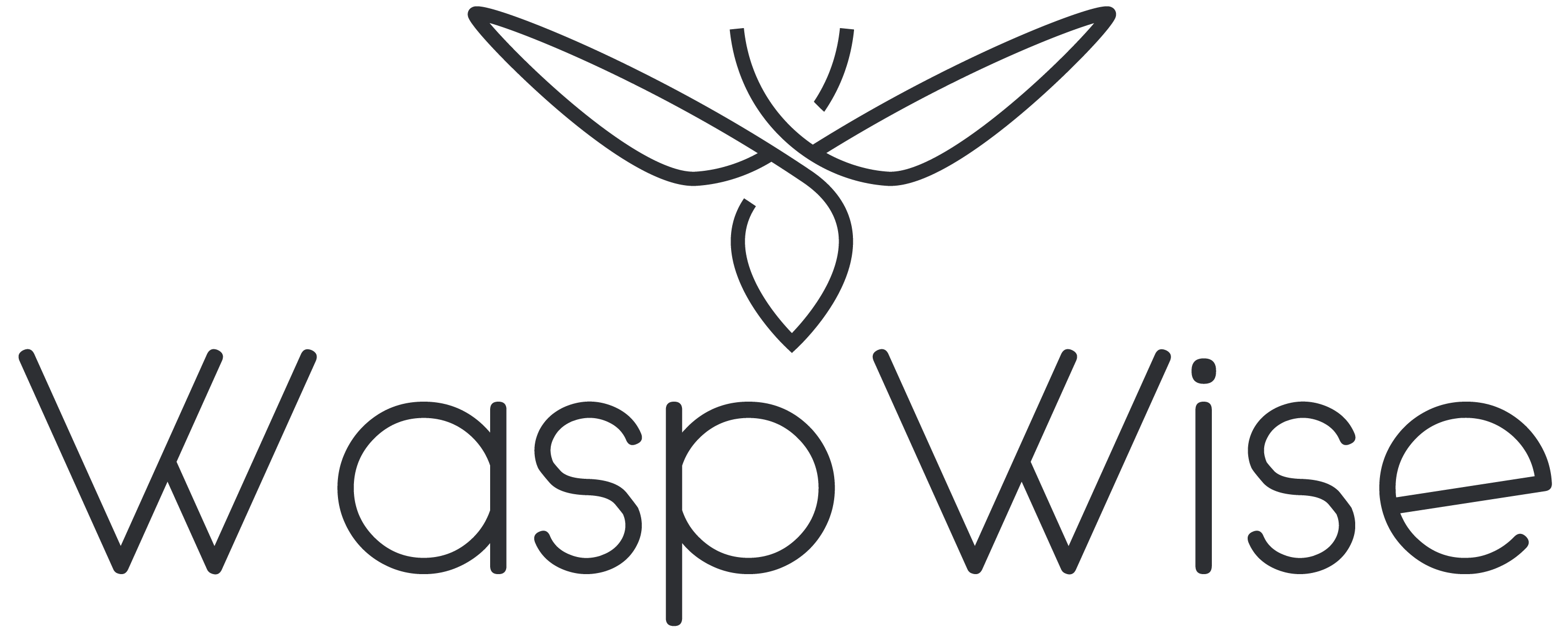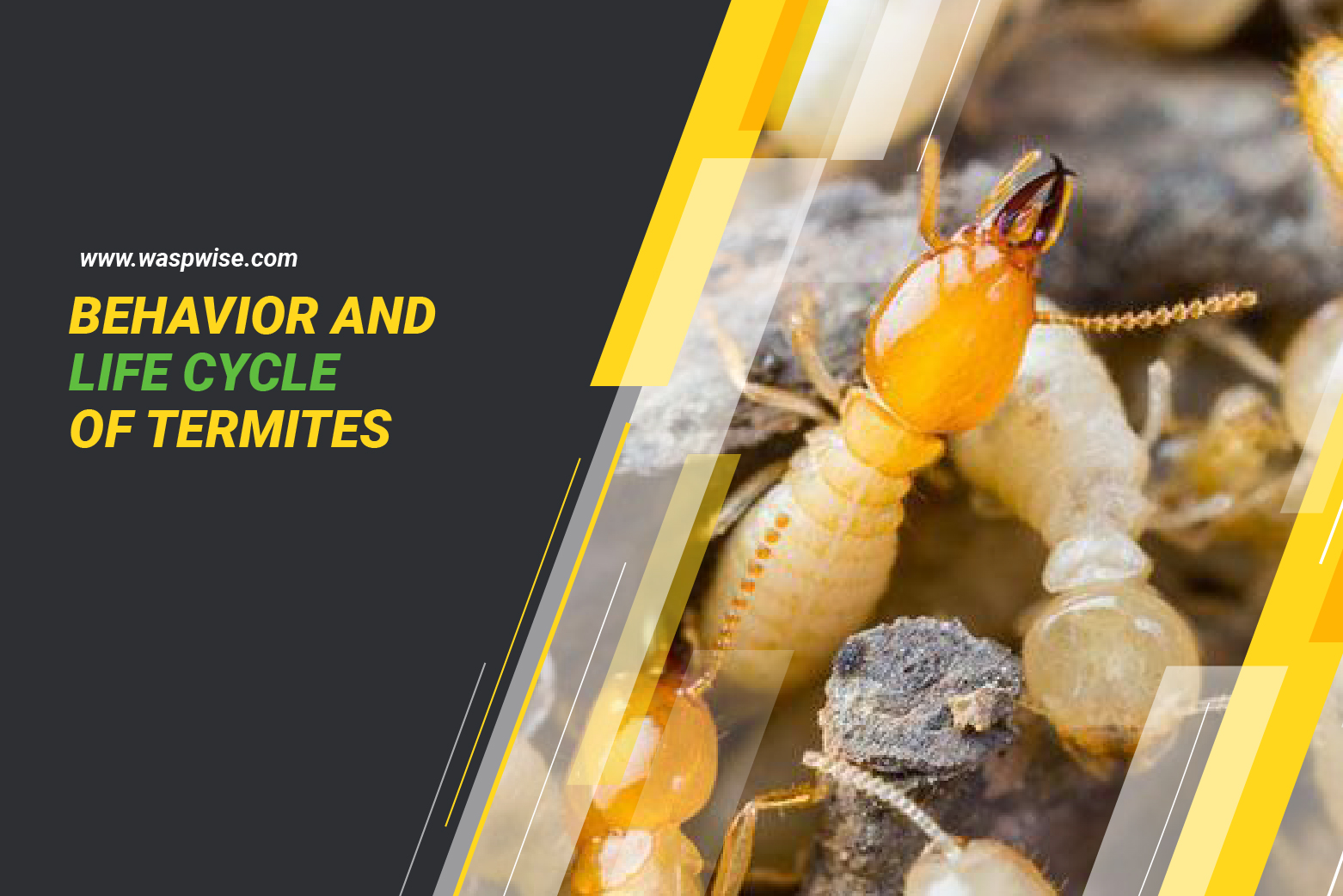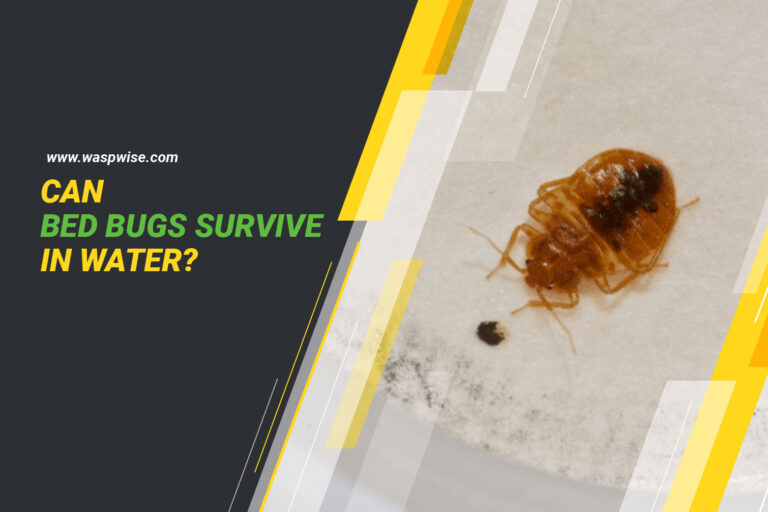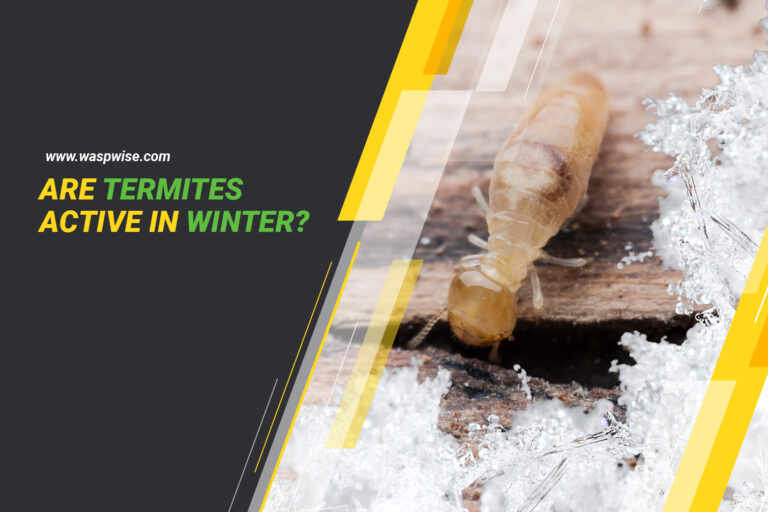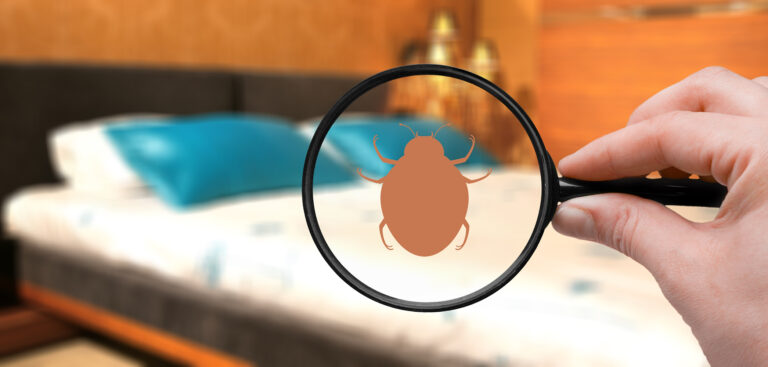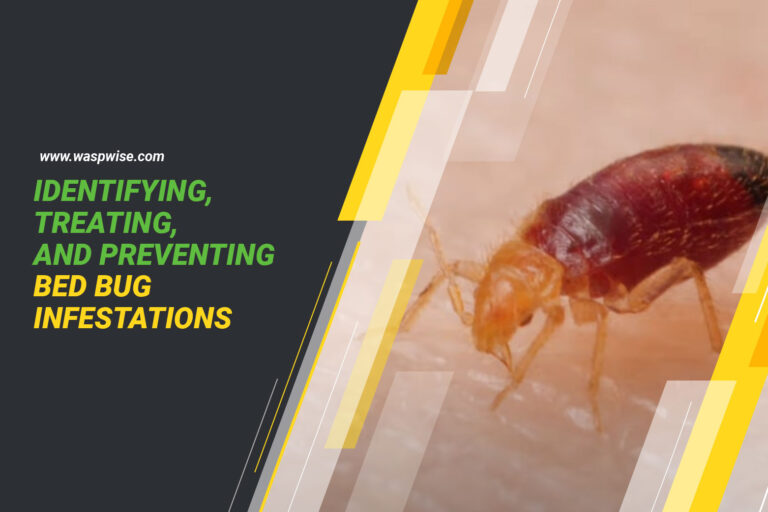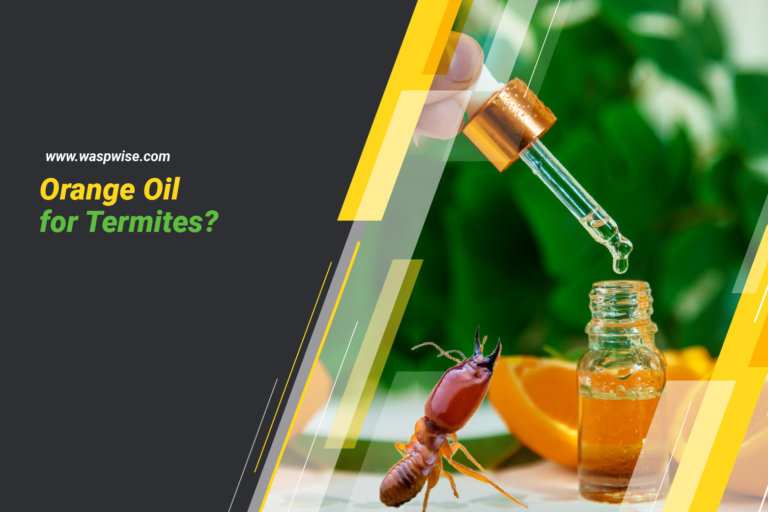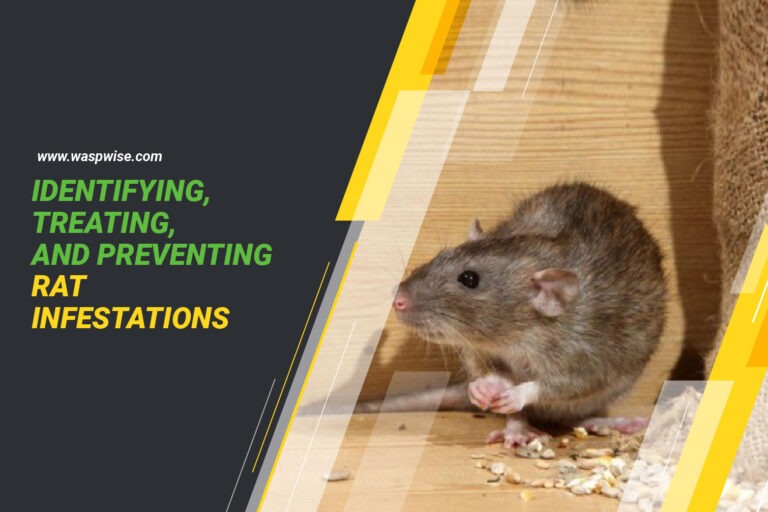BEHAVIOR AND LIFE CYCLE OF TERMITES
Termites are social insects that live in colonies and feed on cellulose, which is found in wood and other plant materials. They are often called “silent destroyers” because they can eat through wood and other materials without being detected until significant damage has already been done. There are over 2,700 species of termites, and they can be found in almost every part of the world except for Antarctica.
ANATOMY OF A TERMITE
Termites are small insects, typically measuring around 1/4 to 1/2 inch in length. They have a soft body with a hard, dark-colored head and mouthparts. Some termites also have two pairs of wings roughly the same size and shape. The wings are used for mating and dispersal.
TYPES OF TERMITES
There are three main types of termites: subterranean termites, drywood termites, and dampwood termites. Subterranean termites live in the soil and build mud tubes to travel from the ground to their food source, which is typically wood in homes and other structures. Drywood termites live in dry wood and do not require contact with the soil. Dampwood termites live in damp or decaying wood and do not require contact with the soil either.
TERMITE HABITATS
Termites may be found in various habitats, including forests, deserts, grasslands, and wetlands. They are most commonly found in areas with a high concentration of wood and other plant materials. Termites play an important role in the ecosystem by breaking down dead plant material and returning nutrients to the soil.
TERMITE FEEDING HABITS
Termites feed on cellulose found in wood, plant roots, and other plant materials. They have special bacteria in their digestive system that helps them break down cellulose. Termites eat through wood and other materials without leaving any visible signs of damage. In fact, it is often not until significant damage has already been done that homeowners realize they have a termite infestation.
TERMITE LIFE CYCLE
Termites go through a process called metamorphosis, which involves four distinct stages: egg, nymph, soldier/cast, and adult. The egg hatches into a nymph, a smaller version of the adult termite. The nymph goes through several molts before becoming a soldier/cast, a specialized termite responsible for defending the colony. The soldier termites (cast) have a large head and mandibles that it uses to protect the colony from predators. The adult termite is responsible for reproduction and maintaining the colony.
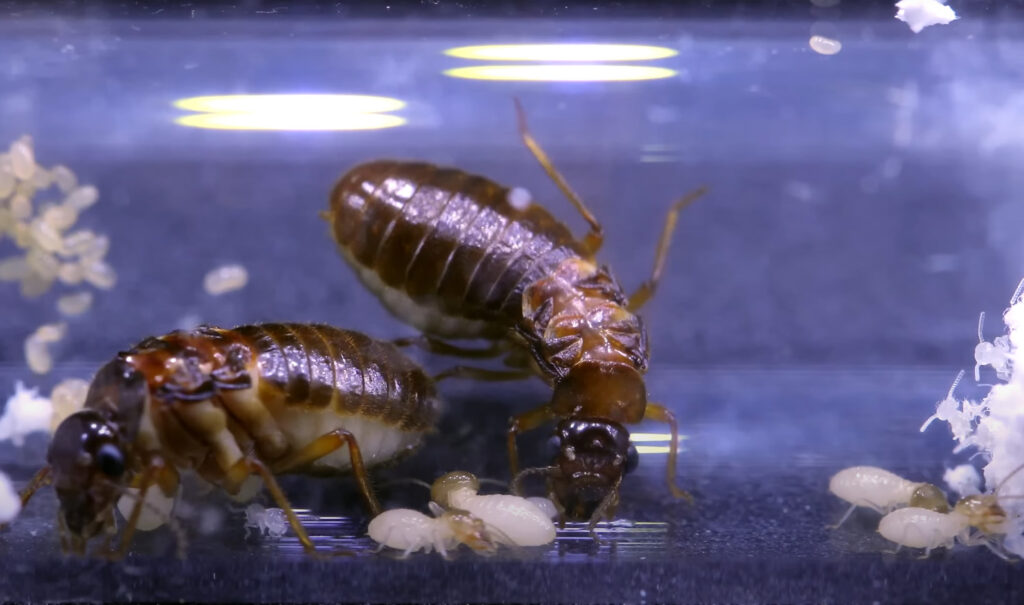
TERMITE REPRODUCTION
Termites have a complex social structure that includes a queen, a king, and workers. The queen and king are responsible for reproduction and can produce thousands of eggs daily. Worker termites are responsible for building and maintaining the colony. They also feed and care for the queen and king.
TERMITE COMMUNICATION
Termites communicate with each other using chemicals called pheromones. These chemicals are used to signal to other members of the colony that there is a food source or danger nearby. Termites also communicate by touching and grooming each other. This helps to maintain social cohesion within the colony.
TERMITE BEHAVIOR
Termites are social insects that live in colonies. They are highly organized and have a well-defined division of labor. Workers are responsible for building and maintaining the colony, soldiers/casts are responsible for defending the colony, and the queen and king are responsible for reproduction. Termites are also known for their ability to build complex structures, such as mud tubes and nests.
SIGNS OF TERMITE INFESTATION
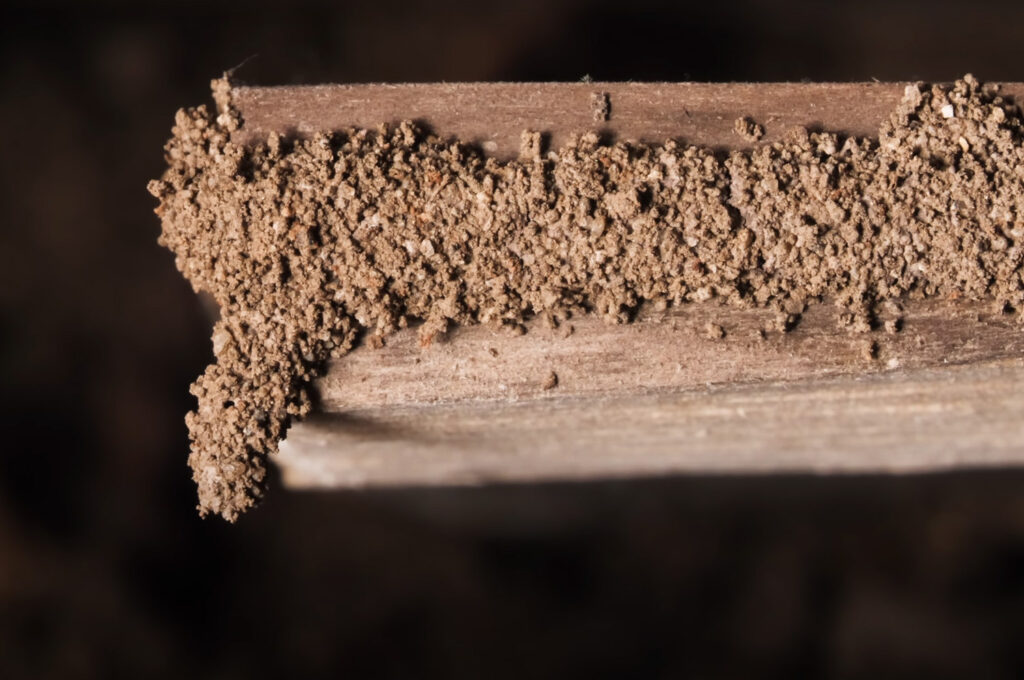
There are several signs that homeowners can look for to determine if they have a termite problem. These include the presence of mud tubes on walls or foundations, piles of termite droppings (known as frass), and hollowed-out or damaged wood. Homeowners may also notice swarms of flying termites, which are often mistaken for flying ants.
PREVENTION AND CONTROL OF TERMITE INFESTATIONS
Preventing termite infestations is essential to avoiding costly damage to homes and other structures. One of the best ways to prevent Termite infiltrations is to eliminate sources of moisture, such as leaky pipes or standing water. Homeowners should also ensure that their homes are properly ventilated, and that wood is stored away from the home.
If homeowners suspect termite swarms, they should contact a professional pest control service. Professional exterminators can use a variety of methods to eliminate termites, including baits, liquid treatments, and fumigation. Homeowners should also consider regular inspections to catch Termite invasions early and prevent significant damage.
TERMITE DAMAGE TO STRUCTURES
Termites can cause significant damage to homes and other structures if left unchecked. They can eat through wood, drywall, insulation, and other materials, weakening structures and creating potential safety hazards. In addition to the structural damage, termite infestations can also lead to costly repairs and decreased property values.
PROFESSIONAL TERMITE CONTROL SERVICES
Professional termite control services can provide homeowners with effective and efficient solutions to termite problems. Exterminators can identify the type of termites present and develop a customized treatment plan to eliminate them. They can also provide regular inspections to catch infestations early and prevent significant damage to homes and other structures.
DIY TERMITE CONTROL SOLUTIONS
There are also several DIY solutions that homeowners can use to control termite infestations. These include using insecticides, baits, and other treatments. However, it is important to note that DIY solutions may not be as effective as professional treatments, and homeowners may not have the knowledge or expertise to apply these treatments properly.
BENEFITS OF PROFESSIONAL TERMITE EXTERMINATION

There are several benefits to using professional termite extermination services. First and foremost, professional exterminators have the knowledge and expertise to identify and eliminate termite infestations. They can also provide regular inspections to catch infestations early and prevent significant damage to homes and other structures.
In addition, professional exterminators use safe and effective treatments to eliminate termites. They can also provide ongoing treatment to prevent future infestations. Finally, using professional extermination services can provide homeowners with peace of mind, knowing that their homes and other structures are protected from the damage caused by termites.
CONCLUSION
In conclusion, termites are social insects that play an important role in the ecosystem by breaking down dead plant material and returning nutrients to the soil. However, they can also cause significant damage to homes and other structures if left unchecked. Homeowners can prevent Termite infiltrations by eliminating sources of moisture and storing wood away from home. If homeowners suspect a termite infestation, they should contact a professional exterminator to develop a customized treatment plan. Professional termite extermination services can provide homeowners peace of mind and protect their homes and other structures from costly damage.
